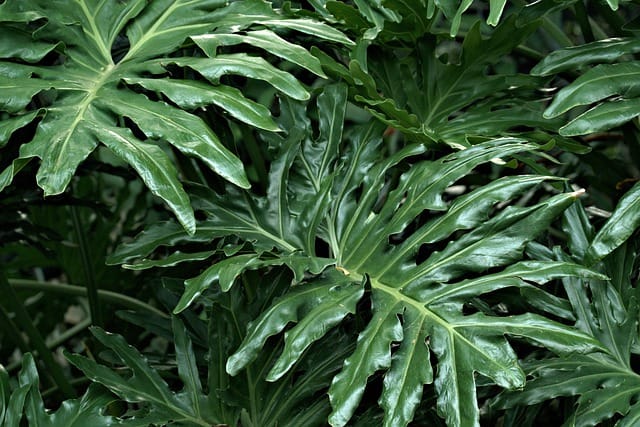How to grow Philodendrons
Philodendrons are popular indoor plants known for their beautiful foliage and low maintenance requirements

In this article:
- Introduction to Philodendrons
- Varieties of Philodendron Plants
- Choosing the Right Philodendron for Indoor Growing
- Indoor Lighting Requirements for Philodendrons
- Temperature and Humidity Needs for Philodendron Plants
- Selecting the Appropriate Pot and Potting Soil
- Watering and Moisture Levels for Philodendrons
- Fertilizing and Nutrient Needs of Philodendrons
- Pruning and Propagating Philodendron Plants
- Common Pests and Diseases Affecting Philodendrons
- Troubleshooting Issues with Philodendron Plants
- Reviving an Unhealthy Philodendron
- Displaying and Styling Philodendron Plants in Indoor Spaces
- Creating a Philodendron Care Schedule
- Frequently Asked Questions about Philodendrons
Introduction to Philodendrons
Philodendrons are popular indoor plants known for their beautiful foliage and low maintenance requirements. They belong to the Araceae family and are native to the tropical regions of America. With their ability to thrive in indoor environments, they have become a favorite choice for plant enthusiasts.
Varieties of Philodendron Plants
There are numerous varieties of philodendron plants, each with its own unique characteristics and growth habits. Some popular varieties include:
- Philodendron Brasil
- Philodendron Heartleaf
- Philodendron Selloum
- Philodendron Golden Goddess
- Philodendron Red Emerald
Choosing the Right Philodendron for Indoor Growing
When selecting a philodendron for indoor growing, it is important to consider factors such as available space, lighting conditions, and personal preferences. Consider the size of the mature plant, as some varieties can grow quite large. Additionally, some varieties may require more sunlight than others.
Indoor Lighting Requirements for Philodendrons
Philodendrons thrive in bright, indirect light. Placing them near a north or east-facing window is ideal. Avoid exposing them to direct sunlight, as it can scorch their leaves. If sufficient natural light is not available, you can supplement it with fluorescent or grow lights.
Temperature and Humidity Needs for Philodendron Plants
Philodendrons prefer temperatures between 60°F and 75°F (15°C and 24°C). They are tropical plants that thrive in high humidity, so it's beneficial to provide them with a humid environment. You can do this by using a humidifier, placing a tray of water near the plant, or misting the leaves regularly.
Selecting the Appropriate Pot and Potting Soil
Choose a pot with good drainage to prevent waterlogging. Philodendrons prefer well-draining potting soil that retains some moisture. A mix of peat moss, perlite, and pine bark is suitable for philodendron plants.
Watering and Moisture Levels for Philodendrons
Water your philodendron when the top inch of soil feels dry to the touch. Avoid overwatering, as it can lead to root rot. It's better to underwater than overwater your plant. Regularly check the moisture level in the potting soil and adjust your watering schedule accordingly.
Fertilizing and Nutrient Needs of Philodendrons
Feed your philodendrons with a balanced liquid fertilizer once a month during the growing season (spring and summer). Follow the instructions on the fertilizer packaging for proper dilution. Avoid overfertilization, as it can cause nutrient burn.
Pruning and Propagating Philodendron Plants
Pruning helps maintain the shape and size of your philodendron. Remove any yellow or dead leaves using clean pruning shears. Philodendrons can be propagated through stem cuttings. Simply cut a healthy stem below a leaf node and place it in water or a moist potting mix until roots develop.
Common Pests and Diseases Affecting Philodendrons
Philodendrons are generally resistant to pests, but they can occasionally encounter problems such as aphids, mealybugs, and spider mites. Regularly inspect your plants for any signs of pests and treat them using organic insecticidal soap or neem oil. Philodendrons are also susceptible to root rot if overwatered or exposed to poorly drained soil.
Troubleshooting Issues with Philodendron Plants
If you notice discoloration, wilting, or stunted growth in your philodendron, it may be a sign of underlying issues. Check the watering, lighting, and temperature conditions to ensure they are suitable for your plant. Adjustments may need to be made to revive a struggling philodendron.
Reviving an Unhealthy Philodendron
If your philodendron is showing signs of distress, take immediate action by adjusting its care routine. Ensure it is receiving adequate light, water, and humidity. Trim any damaged or unhealthy foliage to encourage new growth. Repotting the plant may also help if the root system is constricted or if the soil is waterlogged.
Displaying and Styling Philodendron Plants in Indoor Spaces
Philodendrons make stunning additions to indoor spaces and can be displayed in various ways. They can be placed in decorative pots, hung from macrame hangers, or showcased on shelves. Consider the overall aesthetics of the room when choosing a display method.
Creating a Philodendron Care Schedule
Maintaining a care schedule for your philodendron will help ensure its overall health and vitality. Keep a track of watering, fertilizing, pruning, and any other necessary tasks. This will help you establish a routine and ensure you're providing consistent care.
Frequently Asked Questions about Philodendrons
Here are some commonly asked questions about growing philodendrons:
- How often should I water my philodendron?
- Can philodendrons tolerate low light conditions?
- Should I use potting soil or garden soil for my philodendron?
- What should I do if my philodendron's leaves turn yellow?
Answering these questions and addressing other common concerns can help novice growers care for their philodendrons effectively.
